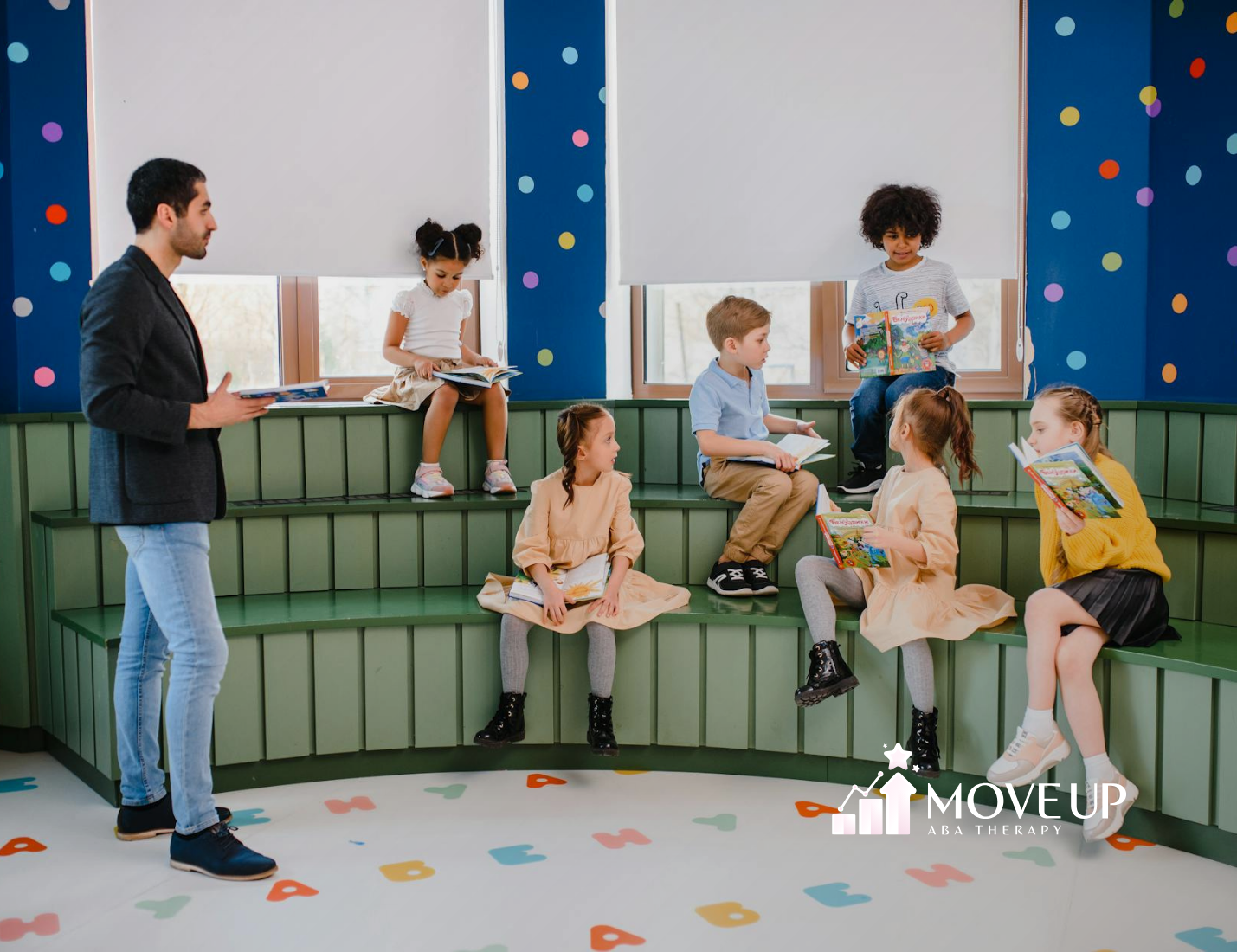Key Highlights
- Applied Behavior Analysis (ABA) leverages behavioral skills training to promote skill acquisition and address challenging behaviors, particularly for individuals on the autism spectrum.
- ABA therapy focuses on incorporating positive reinforcement and constructive feedback to encourage desired behaviors and mastery of new skills.
- Basic skills training forms the foundation for developing communication, social interactions, and self-care abilities.
- A systematic approach ensures effective progress by breaking down complex tasks into manageable steps.
- Family involvement, along with tailored strategies, helps foster skill generalization and consistency across various settings.
For children with autism, developing basic skills is not just an academic task—it’s a vital part of becoming independent and successful in life.
ABA therapy, with its structured and evidence-based approach, has been proven to be one of the most effective therapies to help children with autism build these essential skills. From communication to self-care, every small step in the right direction leads to more confidence and autonomy.
I worked with a young girl, about six years old, who had difficulty expressing her needs. At first, she used only gestures to communicate, but through in-home ABA, we broke down the steps involved in using full sentences. Over time, she began asking for help when she needed it, which was a huge milestone for her.
These moments make me realize just how important basic skills training is—not just for academic success, but for a fulfilling life.
The Importance of Basic Skills Training in ABA
Basic skills training is the foundation of ABA therapy. It’s where everything begins. By focusing on the core skills needed for daily functioning—such as speaking, interacting socially, and caring for oneself—individuals with autism are empowered to navigate the world with greater confidence.
In my experience, when clients master simple tasks, they feel a sense of accomplishment, which fuels their motivation to continue learning. This is why ABA therapy doesn’t just teach skills; it fosters a mindset of growth and perseverance.
Understanding Basic Skills Training in ABA for Autism
Basic skills training is at the heart of ABA therapy. It allows individuals with autism to gain the foundational skills they need to succeed in everyday life. These skills—communication, social interactions, and self-care—are essential for fostering independence and improving the overall quality of life.
Communication Skills: The First Building Block
Communication is one of the most important skills we target in ABA. As an ABA therapist, I often work with clients to improve both verbal and non-verbal communication.
For example, I once worked with a child who had minimal speech but was able to communicate their needs through gestures and sign language. By using positive reinforcement to encourage these methods, we were able to significantly increase their ability to express themselves.
According to the National Autism Association, early intervention, such as ABA, can help children with autism develop speech and language skills more effectively.
Social Skills: Teaching Connection and Interaction
Social skills are essential for fostering relationships and building emotional intelligence. ABA therapy helps individuals with autism learn how to engage with others in a positive and meaningful way. This could be anything from teaching a child how to share toys with peers to helping an adult navigate workplace interactions.
I recall working with a young client who struggled with initiating conversations. Over time, through ABA techniques like role-playing and social stories, we helped them build the confidence to start and maintain simple conversations.
Defining Basic Skills within ABA Therapy
In ABA therapy, basic skills are the essential foundation on which all other learning is built. These skills include communication, social interaction, and self-care. ABA therapists break down complex tasks into smaller steps to make learning more achievable.
How Basic Skills are Taught in ABA Therapy
ABA therapists employ a structured, step-by-step approach when teaching new skills. The process typically includes clear instructions, modeling, practice, and feedback.
- Clear Instructions: I always begin by providing clear and concise instructions to ensure the individual understands what is expected. In a recent session, I had a client practice washing their hands. I demonstrated each step and used short, simple instructions.
- Modeling: After explaining the task, I model the correct behavior for the client to observe. I might show them how to fold clothes or hold a conversation. This allows them to see the task done correctly before attempting it themselves.
- Practice and Feedback: Repetition is key. I then give the client time to practice the behavior, providing positive feedback when they do it correctly, and gentle guidance when corrections are needed.
This process of breaking tasks into smaller components ensures that individuals can gradually master each skill.
Why Basic Skills Matter for Children with Autism
For children with autism, basic skills serve as the stepping stones to a more independent and fulfilling life. These early lessons are crucial, as they enable children to communicate their needs, build relationships, and care for themselves.
Communication: Bridging the Gap
For many children with autism, communication is a barrier. Teaching basic communication skills—such as requesting, answering questions, and understanding social cues—can dramatically change how they interact with the world.
I’ve worked with children who could barely make eye contact at the beginning of therapy. But over time, they not only improved their eye contact but also began initiating greetings and conversations.
Social Interaction: Encouraging Connection
Building social skills is another fundamental aspect of ABA therapy. Children with autism often face difficulties with social interactions, such as taking turns in a game or understanding non-verbal cues. These skills, once learned, can greatly improve their relationships with others and help them navigate social situations with more ease.
Core Areas Targeted in Basic Skills Training
ABA therapy is designed to target several core areas to ensure holistic development. The primary focus areas include communication, social skills, and self-care. By addressing these areas individually, ABA therapy ensures that clients gain the skills they need to live independent, fulfilling lives.
Communication and Language Development
Improving language and communication skills is one of the most important aspects of ABA therapy. According to the American Speech-Language-Hearing Association (ASHA), early intervention in language development leads to better communication outcomes for children with autism.
In ABA sessions, we use several strategies to help improve both verbal and non-verbal communication, such as:
- Video Modeling: This is a great tool for teaching communication. By watching videos of peers engaging in appropriate behaviors, individuals with autism can mimic these behaviors.
- Visual Aids: Using charts, symbols, and pictures is highly effective, especially for individuals who struggle with verbal communication. These tools help provide clarity and structure during the learning process.
By improving communication, individuals with autism can begin to participate more fully in social and educational settings.
Social Interaction and Play Skills
Play is an essential way to build relationships, but children with autism often need guidance to learn how to play with others. ABA therapy focuses on teaching both structured play and spontaneous social interactions.
For example, a child who has trouble taking turns in a game might first practice by playing simple, structured games, with the therapist modeling how to take turns.
Through social skills training, children can also learn how to respond to emotions, engage in group activities, and manage frustrations that may arise during play.
The Process of Basic Skills Training in ABA
ABA therapy is systematic and personalized. It begins with an in-depth assessment to determine an individual’s strengths and weaknesses. Based on this assessment, goals are set, and a tailored plan is developed.
Assessment and Goal Setting
Each ABA program starts with a thorough assessment. This helps the therapist identify where the learner currently stands and what areas need improvement. By gathering data on the learner’s behaviors and abilities, therapists can create specific, measurable, and achievable goals. These goals guide the therapy process and are adjusted as progress is made.
Structuring ABA Sessions for Success
ABA therapy sessions are structured to ensure progress. Sessions typically include:
- Instructional time: Where clear, concise instructions are provided.
- Practice: Learners engage in tasks they’ve been taught to ensure mastery.
- Reinforcement: Positive reinforcement, such as praise or rewards, is given to encourage desired behaviors.
Evidence-Based Techniques Used in Basic Skills Training
ABA therapy uses evidence-based techniques to ensure effective learning. Some of these techniques, like positive reinforcement and modeling, have been proven to promote skill acquisition.
According to research from the National Institute of Mental Health (NIMH), ABA is one of the most effective therapies for improving behavior and skill development in children with autism.
Positive Reinforcement
Positive reinforcement is one of the most widely used techniques in ABA. By rewarding a behavior immediately after it occurs, individuals are more likely to repeat the behavior. For example, after a child successfully makes eye contact during a conversation, I might say, “Great job!” and give a high-five as a reward.
Modeling and Prompting
Modeling helps learners see the correct way to perform a task. It could involve demonstrating how to tie shoes or asking for help when needed. Prompting involves giving cues, either verbal or visual, to help the learner perform the task correctly.
Involving Families and Caregivers in the Process
Family involvement is crucial for ensuring that skills learned in ABA therapy are maintained outside of the therapy room. Parents and caregivers are trained to use the same strategies at home, reinforcing the skills learned during therapy sessions.
Why Family Support Matters
As an ABA therapist, I’ve seen how powerful family support can be in reinforcing skills. Parents can incorporate the strategies learned during therapy into daily routines, making skill development a part of everyday life. This consistency increases the likelihood that learned behaviors will generalize into other settings.
Conclusion
Basic skills training in ABA therapy is essential for individuals with autism. It empowers them to communicate, engage with others, and take care of themselves, fostering greater independence. With personalized support, structured training, and family involvement, ABA therapy can significantly improve the quality of life for individuals with autism and their families.
At Move Up ABA, we understand that every individual’s journey is unique, and we’re here to provide the support needed for lasting change. Whether you’re seeking ABA therapy for your child or looking for expert guidance in Maryland or Virginia, our experienced team is here to help.
Contact us today for a free consultation, and let’s work together to empower your loved one through the life-changing benefits of ABA therapy. Move Up ABA—where progress is just the beginning.
Frequently Asked Questions
What are examples of basic skills taught in ABA?
Basic skills include communication, social interactions, and self-care tasks like brushing teeth or getting dressed.
How long does it take to see progress with basic skills training?
Typically, clients begin to see improvements in 4-6 weeks with consistent therapy. Progress depends on the individual and their specific needs.
Can parents use ABA techniques at home for basic skills?
Yes, parents can reinforce skills at home by practicing regularly and using positive reinforcement techniques learned during therapy.
What are examples of basic skills taught in ABA?
Basic skills taught in ABA are things like social interactions, how to take care of yourself each day, and communication skills. In these sessions, people work on specific skills. For example, this can be eye contact, taking turns when talking, or how to solve problems. The goal is to help people get better results from therapy.
How long does it take to see progress with basic skills training?
Progress can be different for each person, but most clients start to see better skill development in about 4 to 6 weeks if they stick with therapy. This iterative process means that the steps might change as we go, based on behavior analysis. We look for positive outcomes and celebrate when clients meet their own goals.
Can parents use ABA techniques at home for basic skills?
Absolutely! Parents can use positive reinforcement and set up regular practice to help keep the things their child learns in therapy going strong. When they give helpful, constructive feedback at home, they help their child get even more out of ABA sessions. This gives the child more chances to grow and learn, both in therapy and at home.
Is basic skills training suitable for all children with autism?
Yes, every child gets help from basic skills training in ABA. The training is changed to fit their individual needs. Therapists look at what each child needs and give necessary adjustments. This way, the approach stays right and does its job for kids at different developmental stages.
How is progress measured and maintained over time?
Progress is kept in check by regular checking of behaviors and seeing how acquired skills are used over time. ABA workers look at key milestones to make sure people remember their skills. This helps build independence and makes the quality of life better.
Sources:
- https://online.regiscollege.edu/blog/aba-therapy-examples/
- https://www.autismspeaks.org/life-skills-for-autism
- https://www.nichd.nih.gov/health/topics/autism/conditioninfo/treatments/early-intervention
- https://www.sciencedirect.com/science/article/pii/S1750946720301227
- https://pmc.ncbi.nlm.nih.gov/articles/PMC9788721/







